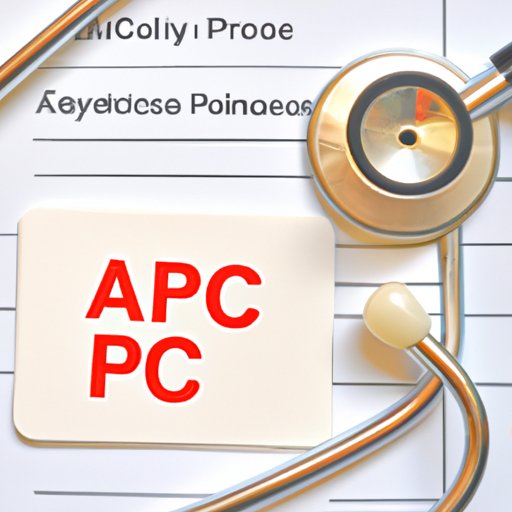
Introduction
In the rapidly changing landscape of healthcare, it’s important for patients and providers alike to stay abreast of the latest trends and innovations. One such development is in the field of Advanced Primary Care (APC). While the term may not be as well-known as other healthcare initiatives, understanding what APC is and how it can improve patient outcomes and reduce healthcare costs is critical. In this article, we’ll explore the importance of APC in healthcare, breaking down its key components and the potential it holds for transforming the delivery of patient care.
Understanding the Importance of Advanced Primary Care (APC) in Healthcare: An Overview
APC can be defined as a model of primary care that goes beyond the traditional “sick care” model. Key components of APC include a focus on patient-centered care, a team-based approach to healthcare delivery, and robust communication and coordination between healthcare providers. This model shifts the focus from treating individuals after they become ill to comprehensive care that can help prevent chronic diseases.
One major advantage of APC is the potential it has to improve patient outcomes. By providing proactive care, APC can help patients better manage chronic conditions and reduce the need for costly hospitalizations. Additionally, APC programs can lead to more efficient care delivery, which can help reduce healthcare costs.
Examples of APC programs and initiatives include the Comprehensive Primary Care Plus (CPC+) model, which provides financial incentives for primary care providers who achieve certain quality metrics, and the Patient-Centered Medical Home (PCMH) initiative, which encourages a team-based approach to care delivery.
Breaking Down APC in Healthcare: How it Improves Patient Outcomes and Reduces Healthcare Costs
When it comes to improving patient outcomes, APC has shown numerous benefits. Patients who receive care through APC programs have reported higher levels of satisfaction with their care and are less likely to visit the emergency department or be hospitalized.
In one study, researchers found that patients with diabetes who received APC saw a 24% reduction in hospital admissions and a 25% reduction in emergency department visits. Similar reductions were observed in patients with other chronic conditions such as asthma, heart disease, and depression.
In addition to these benefits, APC can also help reduce healthcare costs. By focusing on preventative care, APC can help reduce the need for costly interventions down the line. This can include things like reducing the number of unnecessary tests and procedures or helping patients better manage chronic conditions to avoid costly hospitalizations.
From Reactive to Proactive Healthcare: The Role of APC in Promoting Preventative Medicine
One of the key ways in which APC promotes better healthcare outcomes is through promoting preventative medicine. This includes services like nutrition counseling, smoking cessation programs, and regular screenings for conditions such as cancer. By catching diseases early and better managing chronic conditions, APC can help prevent serious illnesses and avoid expensive medical procedures.
Research has shown that preventative medicine can lead to significant cost savings. In one study, researchers found that preventing just 1% of heart attacks and strokes can save $4.1 billion in healthcare costs annually. Similarly, early cancer detection can lead to significant cost savings in terms of treatment and recovery.
Revolutionizing the Patient-Centered Approach: Exploring the Benefits of APC in Healthcare
Another key aspect of APC is its patient-centered approach. This means prioritizing the needs and preferences of individual patients and encouraging collaboration between healthcare providers to ensure a holistic approach to care delivery.
Patient-centered care can have a significant impact on healthcare outcomes. Patients who feel more involved in their care have been shown to experience better health outcomes and higher levels of satisfaction with their care. Additionally, this approach can help reduce burnout among healthcare providers by empowering them to work collaboratively and provide high-quality care.
Examples of patient-centered approaches used by APC include care coordination, which involves working with patients to create a personalized care plan that takes into account all aspects of their health, and patient education, which helps individuals better understand their health conditions and how to manage them.
APC: The Future of Primary Care in Healthcare – How it’s Changing the Landscape of Patient Care
As healthcare continues to evolve, APC is poised to play an increasingly important role in the delivery of patient care. This model has the potential to expand access to care, improve health outcomes, and reduce costs for individuals and healthcare systems alike.
One challenge to widespread adoption of APC is the need for robust infrastructure and support for healthcare providers. This includes everything from funding mechanisms to ensure that practices have the resources they need to implement APC to training programs that help providers learn how to deliver high-quality, coordinated care.
Despite these challenges, however, APC represents a promising new direction for primary care delivery. With its focus on patient-centered, proactive care, APC has the potential to transform the way we approach healthcare delivery and improve the lives of patients across the country.
Conclusion
In conclusion, APC is an exciting development in the field of healthcare that has the potential to significantly improve patient outcomes and reduce healthcare costs. By shifting the focus from reactive to proactive care, promoting preventative medicine, and prioritizing patient-centered approaches to care delivery, APC represents a promising new direction for primary care. While challenges remain, the importance of understanding and embracing APC cannot be overstated. As we look to the future of healthcare, APC offers a glimpse of what’s possible when we put patients and their needs at the center of care delivery.




